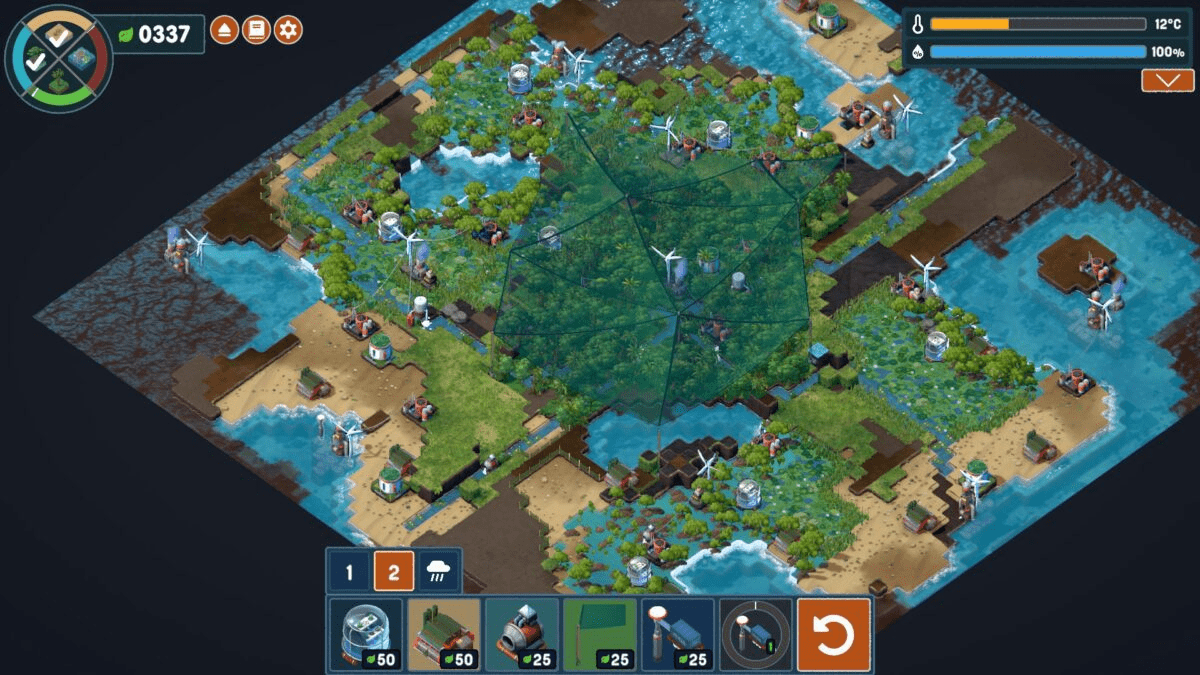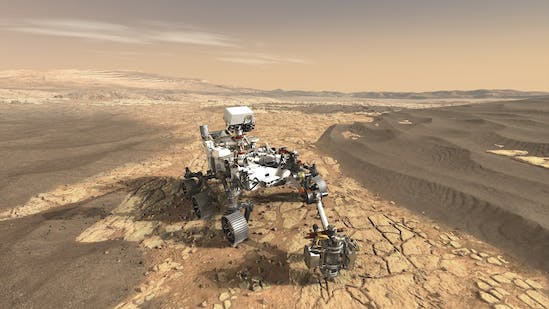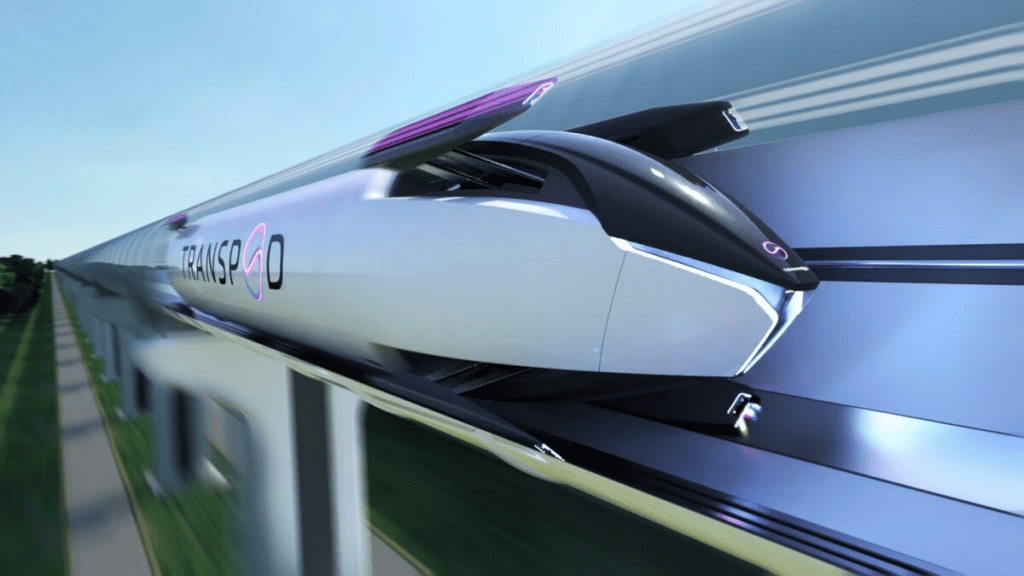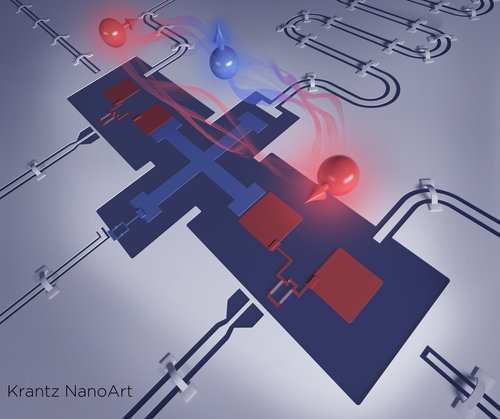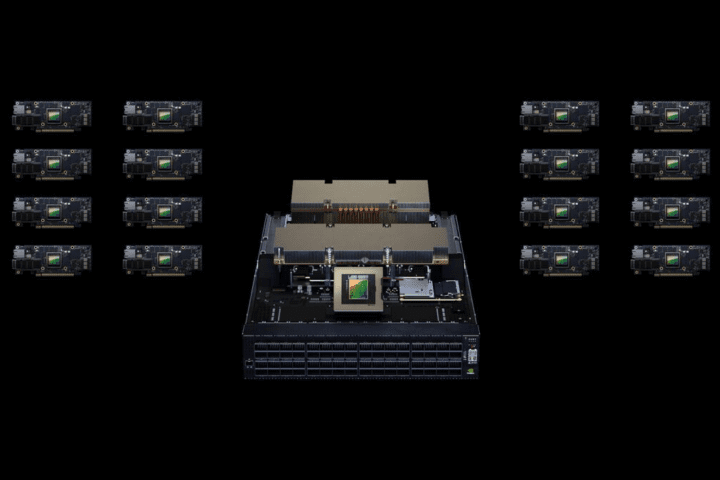Terra Nil, a video game developed by Free Lives, is an environmental restoration game that focuses on the task of restoring a barren, polluted landscape back to life. The game presents players with a landscape devoid of life, featuring toxic soil, dried-out river beds, and other environmental challenges.
The objective in Terra Nil’s is to strategically place various buildings and machines to facilitate the restoration process. The game incorporates elements of puzzle-solving, as players need to carefully consider the placement of buildings to maximize their effectiveness and avoid resource waste.
As the desolate landscape is embarked upon for restoration in Terra NIL, you are greeted by cracked, brown earth. As electricity can be provided to machines by placing a windmill on a stone surface, a seemingly weighty task is made easy in Terra Nil.
For detoxifying the environment and providing vital moisture, essential tools like the toxin scrubber and irrigator are needed. While heat and electricity in windmill-inaccessible areas are offered by recyclable atomic reactors, the sea can see the growth of a vibrant coral reef by the polyp collector.
Recycling and the reintroduction of the local fauna are vital aspects of the restoration process. Highlighting the core jurisdiction between god-like power and the need for departure in the game, once nature is restored, the player’s role is complete.
Terra Nil’s serves as a reaction to the slow response of global leaders to addressing the climate crisis. Hopelessness is avoided as a future world is imagined where attempts to cross-correct came too late. Expressing hope with a darkness lurking beneath its utopian surface, rather than being preached, the impossible task of restoring the environment is presented in Terra Nil.
Providing a soothing experience that reimagines city-building through ecological balance, the genre norms are challenged by the game. Players must utilize windmills to generate electricity, toxin scrubbers to detoxify the area, irrigators to provide moisture, and other tools to kickstart the revival of the ecosystem.
With energy produced by wind turbines for toxin scrubbers and irrigators, ecology balancing is the focus in Terra Nil’s, unlike humans being involved directly. Using a variety of speculative fiction tools without involving humans directly, diverse theories can be grown in Terra Nil.
Emphasizing hope throughout the experience, a compelling gameplay loop is created by the circularity of the ecological economy. The game’s simple interface, tutorial, and in-game guidebook contribute to a smooth and relaxing environmental restoration process.
Offering the freedom to reset, recalibrate, and make amends—learning from mistakes—is encouraged in Terra Nil. In order to optimize resource usage and facilitate recycling, tactical decision-making is required for the placement of buildings in Terra Nil.
Reinforcing the idea that saving the planet can be easy, Terra Nil is forgiving and accessible due to its difficult settings. Inclusion of a blasted city as a biome in Terra Nil implies the consequences of neglecting environmental concerns. With the focus instead on the means of restoration and the setting of objectives for rewinding, preventing collapse is suggested to be futile in Terra Nil.
Emphasizing a paternalistic perspective, the imposition of human order on the natural world is involved in Terra Nil’s approach to restoration. Showcasing a technocratic underpinning and raising questions about expertise and decision-making, technology is presented as the solution for restoration in Terra Nil.
Terra Nil raises questions about the authenticity of decisions made and who has the authority to dictate the restoration process while restoring the environment. Entering into conversations beyond its cli-fi premise and inviting critical analysis, Terra Nil exists within a larger context.
Similar Post
Shadows of uncertainty linger beneath Terra Nil’s hopeful facade, though optimism and solutions are offered by the game. Prompting considerations of broader implications, a focused experience is allowed by the controlled scope of Terra Nil.
The game’s post-apocalyptic setting opens up discussions about governance, expertise, and the real-world impact of decisions based on theoretical understandings. Challenging players to question the game’s underlying assumptions and implications, Terra Nil’s focus on solutions and optimism doesn’t exempt it from deeper scrutiny.
Inviting players to contemplate the moral and ethical dimensions of environmental restoration, uncomfortable but necessary reflections are prompted by Terra Nil. Through its gameplay, players are engaged in conversations about environmental responsibility and the role of technology in solving global challenges.
In the end, the shadows of hopefulness in Terra Nil’s serve as a reminder of the complexities and uncertainties inherent in our pursuit of a restored world. Terra Nil is helping to plant trees with a partnership with Tree-Nation. Moreover, 8% of Terra Nil’s profits on Steam go to Endangered Wildlife Trust.
Where to buy?
